Tissot, James Jacques-Joseph
1836 – 1902
French
Tissot was born to wealthy parents in the port city of Nantes. His artistic talents were recognized early and he was sent to the École des Beaux-Arts in Paris at a young age. He immersed himself in the art world and began life-long friendships with Whistler and Degas. His paintings were successful almost immediately and were purchased by such museums as the Musée de Luxembourg and the Louvre.
This early success was his introduction into the Parisian Haute Monde. It was the peak of the Second Empire of Napoleon III and Paris was enjoying a time of brilliance and excess. Tissot was quickly embraced by society and used his keen eye and artistic gifts to chronicle the people and events in his paintings and prints. These early works often evidence his fascination with Japanese prints with hints of the popular “Japonism”. He moved in very fashionable circles and sustained a lavish lifestyle by painting portraits and through generous patronage.
Tissot’s flirtation with British society commenced around 1864 when he exhibited a painting at the Royal Academy and his name started appearing in “Vanity Fair”. During the War of 1870 between France and Prussia, Tissot became a regular contributor of caricatures to “Vanity Fair” which he smuggled to London across enemy lines. He found inspiration in the war and recorded the atrocities he witnessed in several very strong etchings. After Paris fell to the new Republican government in 1875, Tissot escaped to England and was quickly adopted by London society. Shortly after his arrival he established himself in Saint John’s Wood where he created many of his most memorable prints.
In 1876 Tissot met Mrs. Kathleen Newton who was to be his model. She soon became his muse and is believed to have been his great love. The fact that she was a divorcee with a child prevented their marriage and they were careful to hide the relationship from visiting colleagues or benefactors. However, Tissot painted her lovely face many times and some of his greatest and best-known etchings are portraits of her.
Mrs. Newton died of tuberculosis in Tissot’s home in 1882 and he left London for Paris within days of her passing. The change was more than just location. After the move Tissot’s work became more spiritual and religious and his portraits of French society, while always beautiful, became cynical and dark. He traveled extensively throughout the Holy Land and spent his last years working and living in almost complete isolation in the French country.
Tissot left behind a collection of work that is treasured today for both its technical expertise and its ability to make us dream. The lushness of the printing and the charm of the subjects continue to impress both print connoisseurs and those captivated by the nostalgia of a long ago time.
-
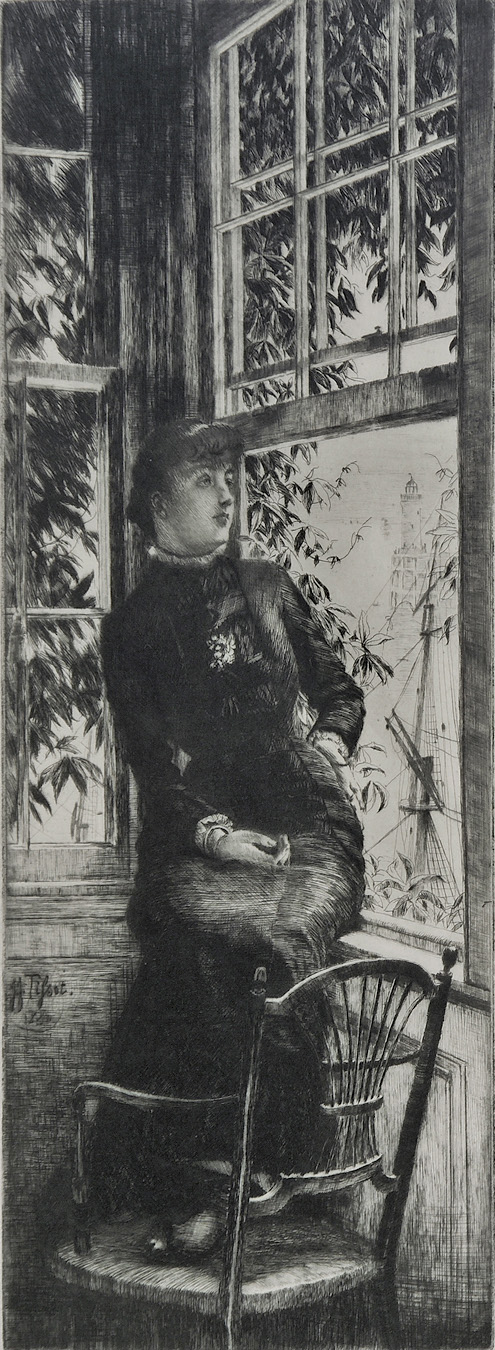
Tissot, James Jacques-Joseph
(1836 - 1902) French$4,000.
“Au bord de la mer (W. 47)”, 1880
Etching and drypoint printed on Japan paper
Edition about 100
14 15/16" x 5 7/16"
Signed and dated in plate
Signed in pencil and red stamped in margin -
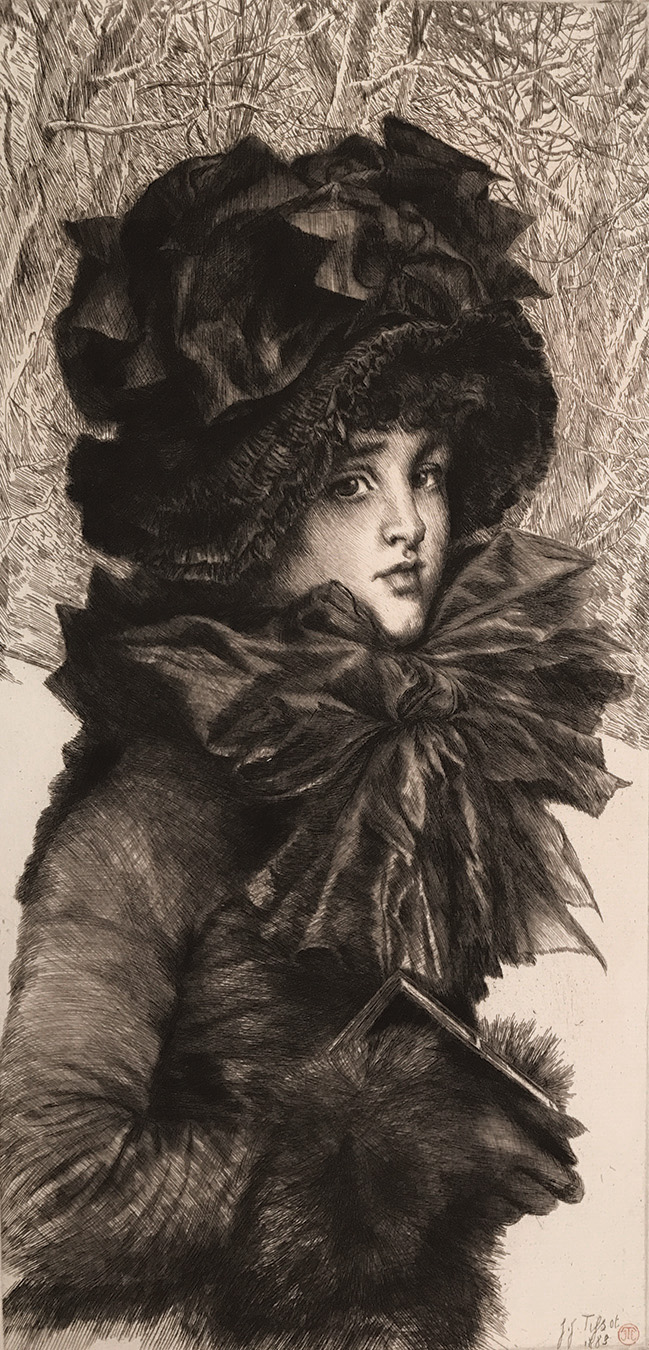
Tissot, James Jacques-Joseph
(1836 - 1902) French
“Le Dimanche matin (W. 72)”, 1883
Etching and drypoint printed on laid paper
Edition about 100
15 ¾" x 7 ½"
Framed
Signed and dated in plate
Red stamped in image
P.O.R. -
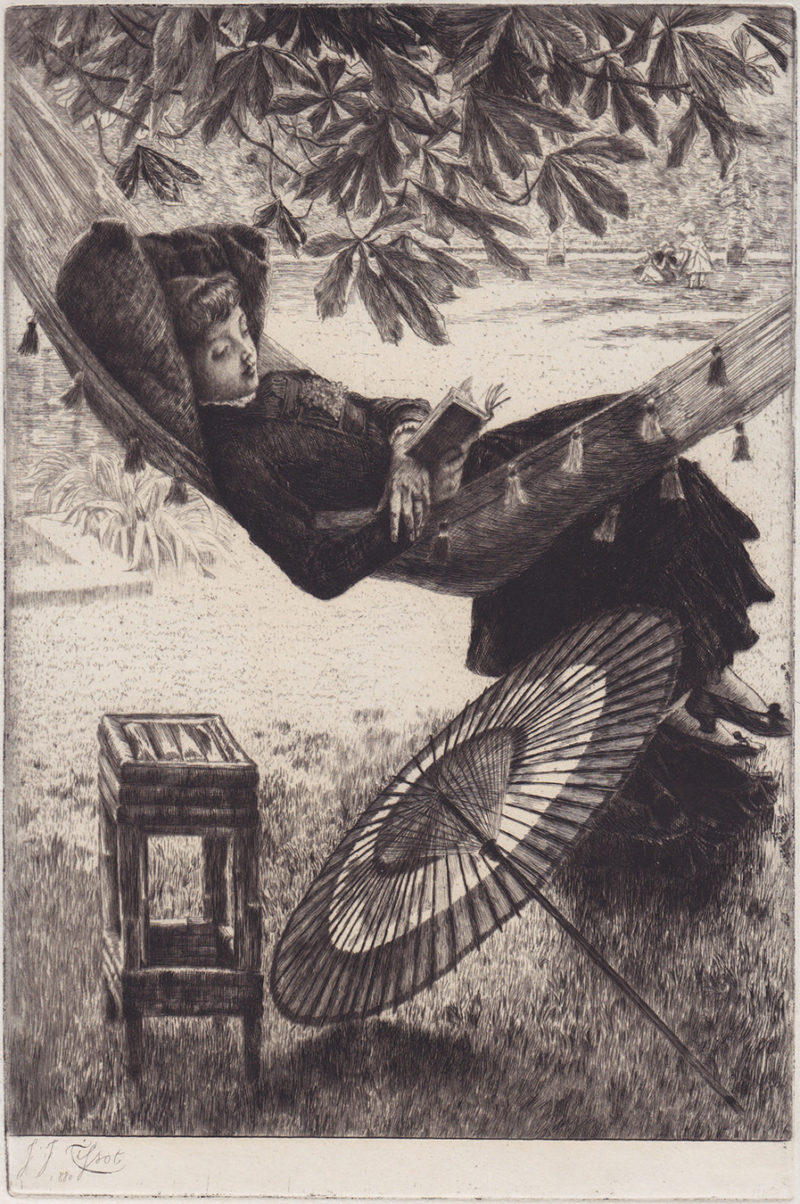
Tissot, James Jacques-Joseph
(1836 - 1902) French$4,500.
“Le Hamac (W. 46)”, 1880
Etching and drypoint
Edition about 100
10 15/16" x 7 ¼"
Signed and dated in plate -
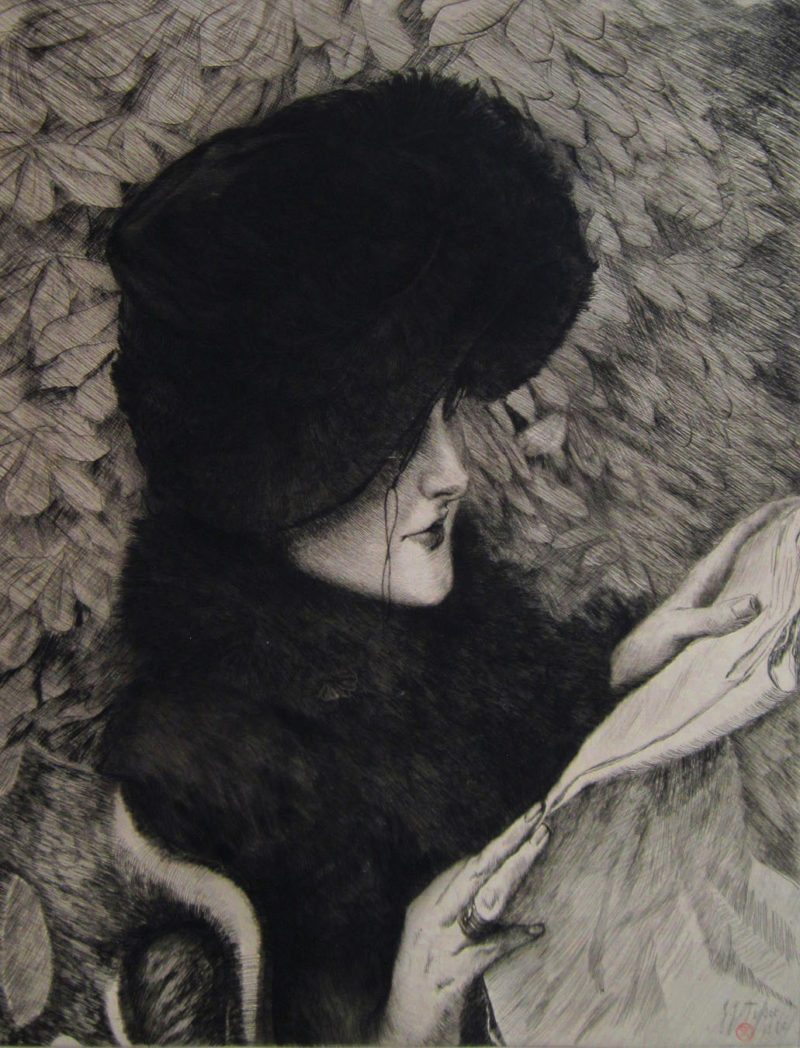
Tissot, James Jacques-Joseph
(1836 - 1902) French
“Le Journal (W. 73)”, 1883
Etching and drypoint
Edition about 100
14 ⅞" x 11 ½"
Signed and dated in plate
Red stamped in image -
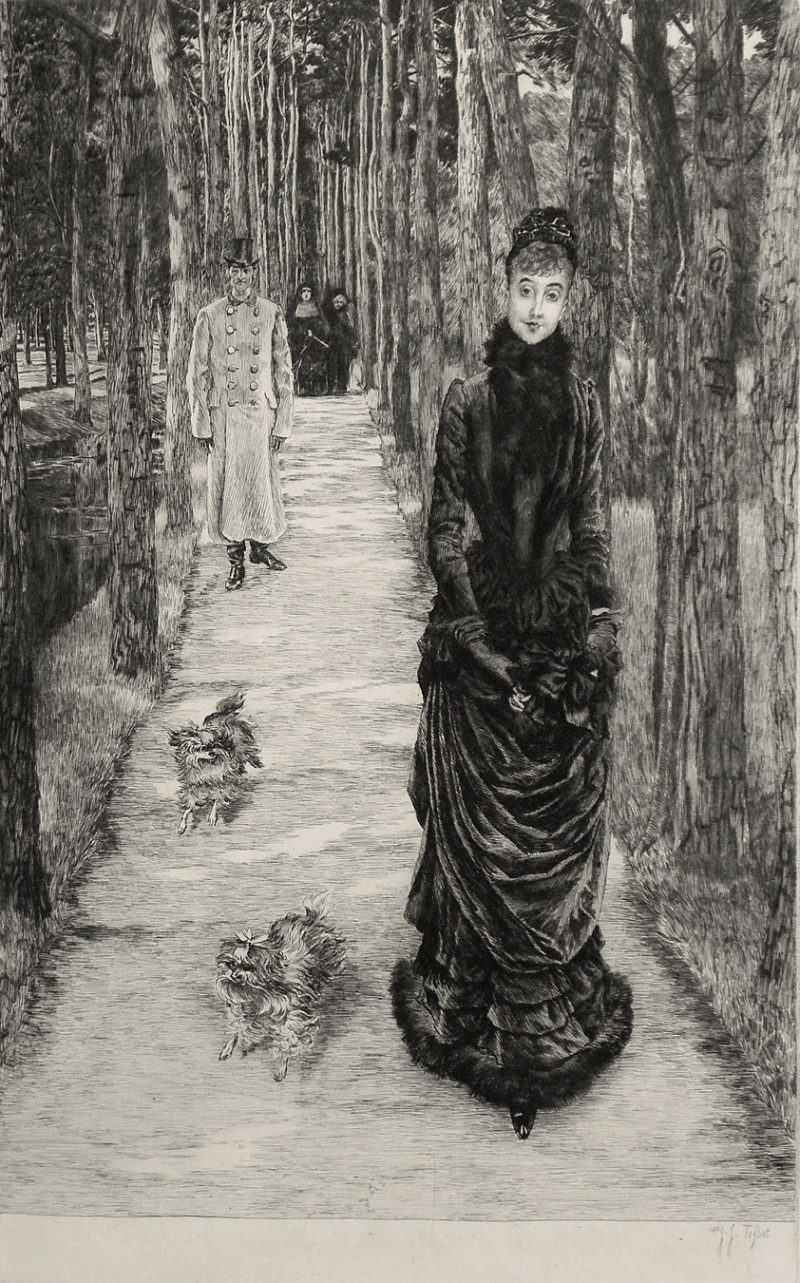
Tissot, James Jacques-Joseph
(1836 - 1902) French$4,800.
“La Mysterieuse (W.80)”, 1885
Etching and drypoint
Edition about 100
15 ⅝" x 9 ⅞"
Minor cracking along plate mark has been professionally restored
Framed
Signed in plate in margin -
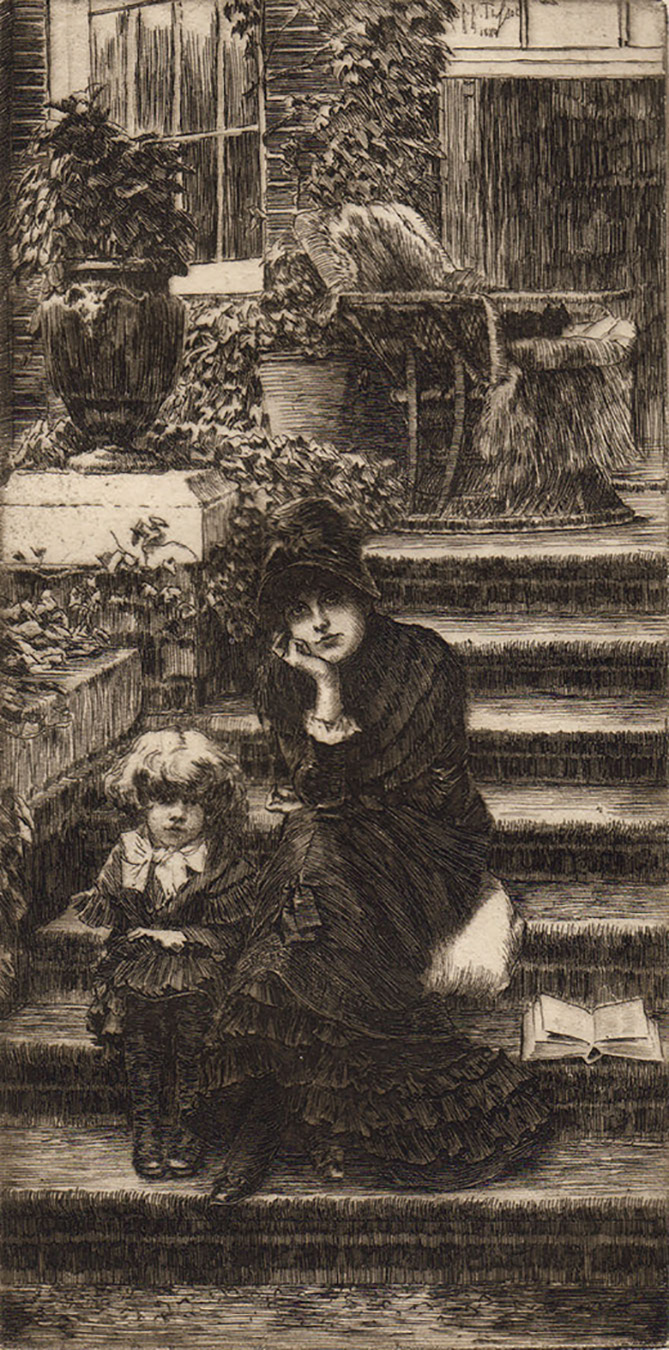
Tissot, James Jacques-Joseph
(1836 - 1902) French$3,250.
“Rêverie (W. 52)”, 1881
Etching and drypoint
Edition about 100
9" x 4 ½"
Signed and dated in plate -
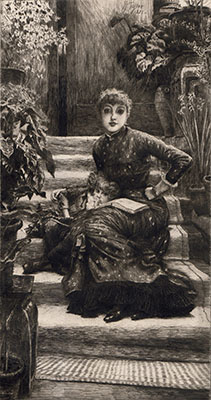
Tissot, James Jacques-Joseph
(1836 - 1902) French$3,250.
“La Sœur aînée (W. 53)”, 1881
Etching and drypoint
Edition about 100
11 ⅜" x 6"
Signed and dated in plate -
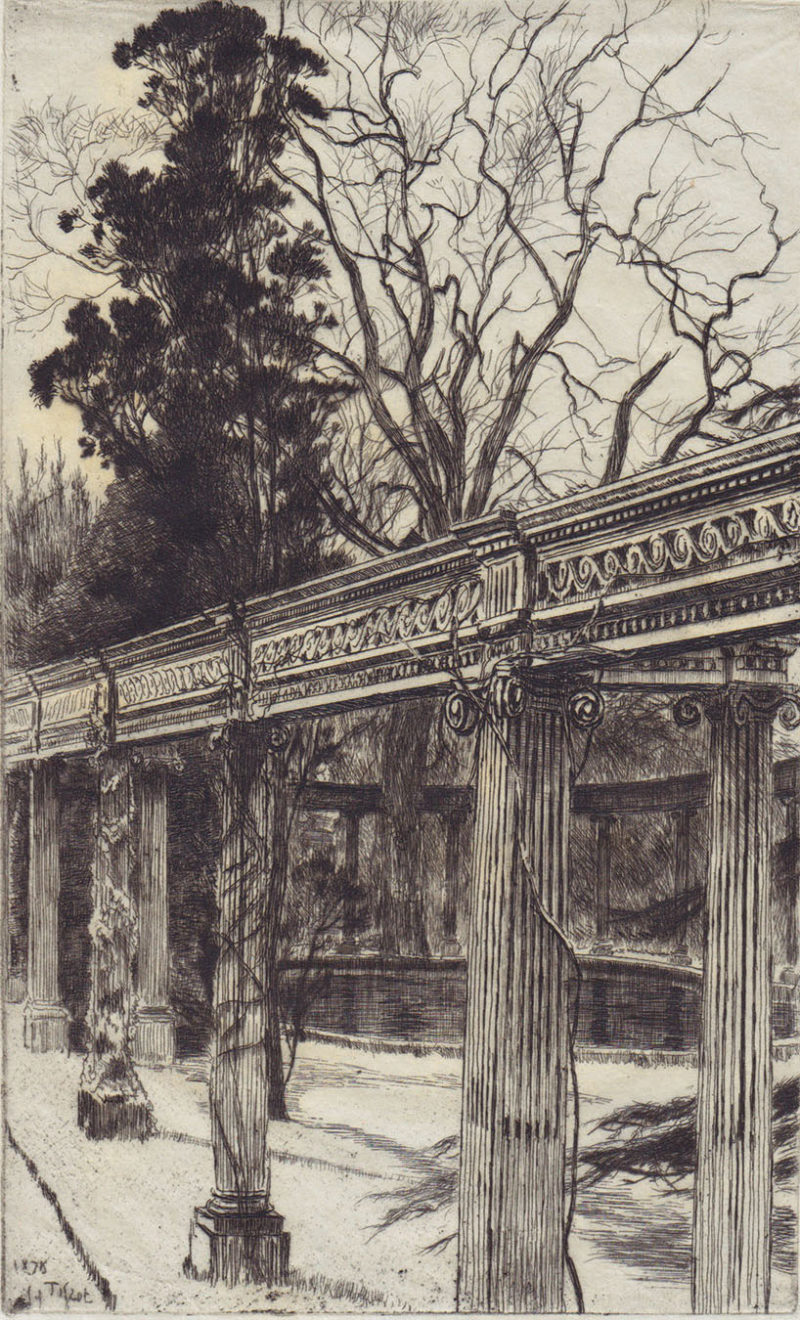
Tissot, James Jacques-Joseph
(1836 - 1902) French$1,000.
“Mon jardin à S.-John's Wood (W. 39)”, 1878
Etching and drypoint printed on fine tissue
Edition about 100
7 ⅜" x 4 ½"
Signed and dated in plate -
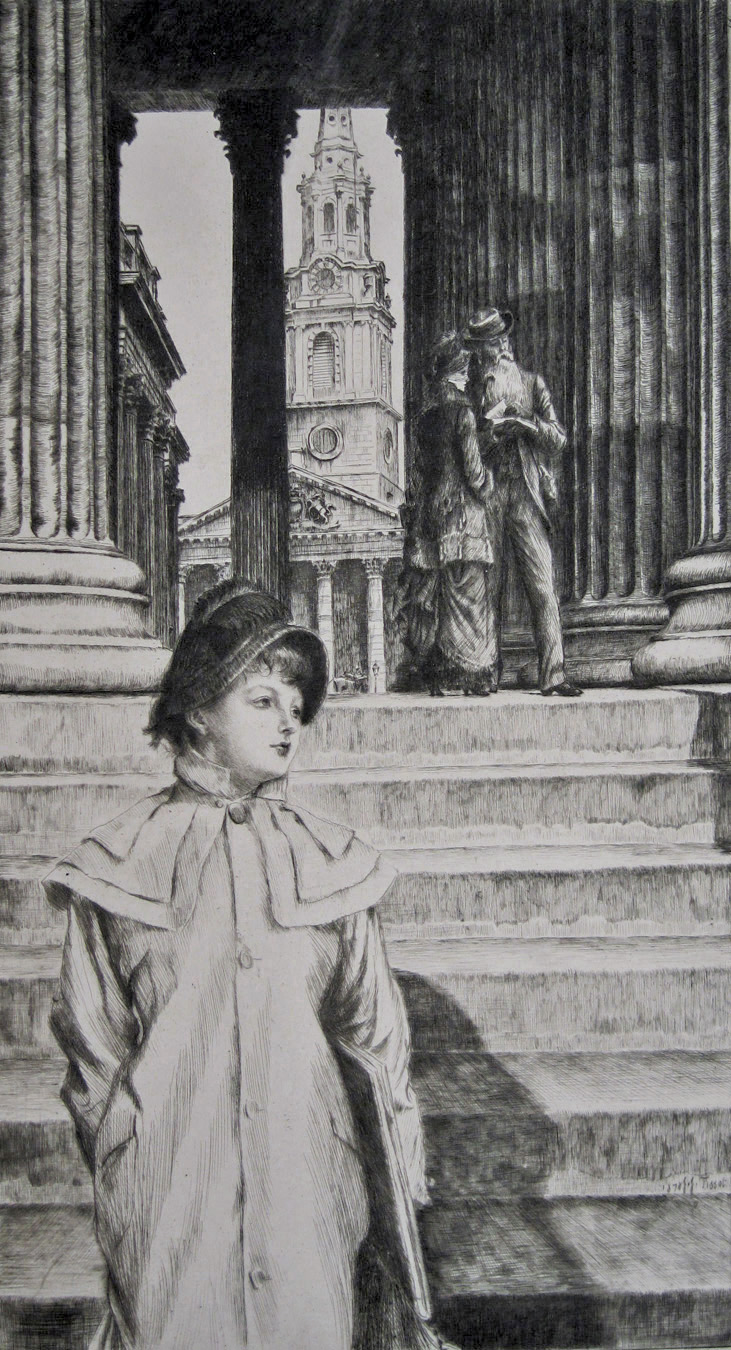
Tissot, James Jacques-Joseph
(1836 - 1902) FrenchSOLD
“Le Portique de la Galerie nationale à Londres (W. 40)”, 1878
Etching and drypoint
Edition about 100
14 ⅞" x 8 ¼"
Signed and dated in plate
